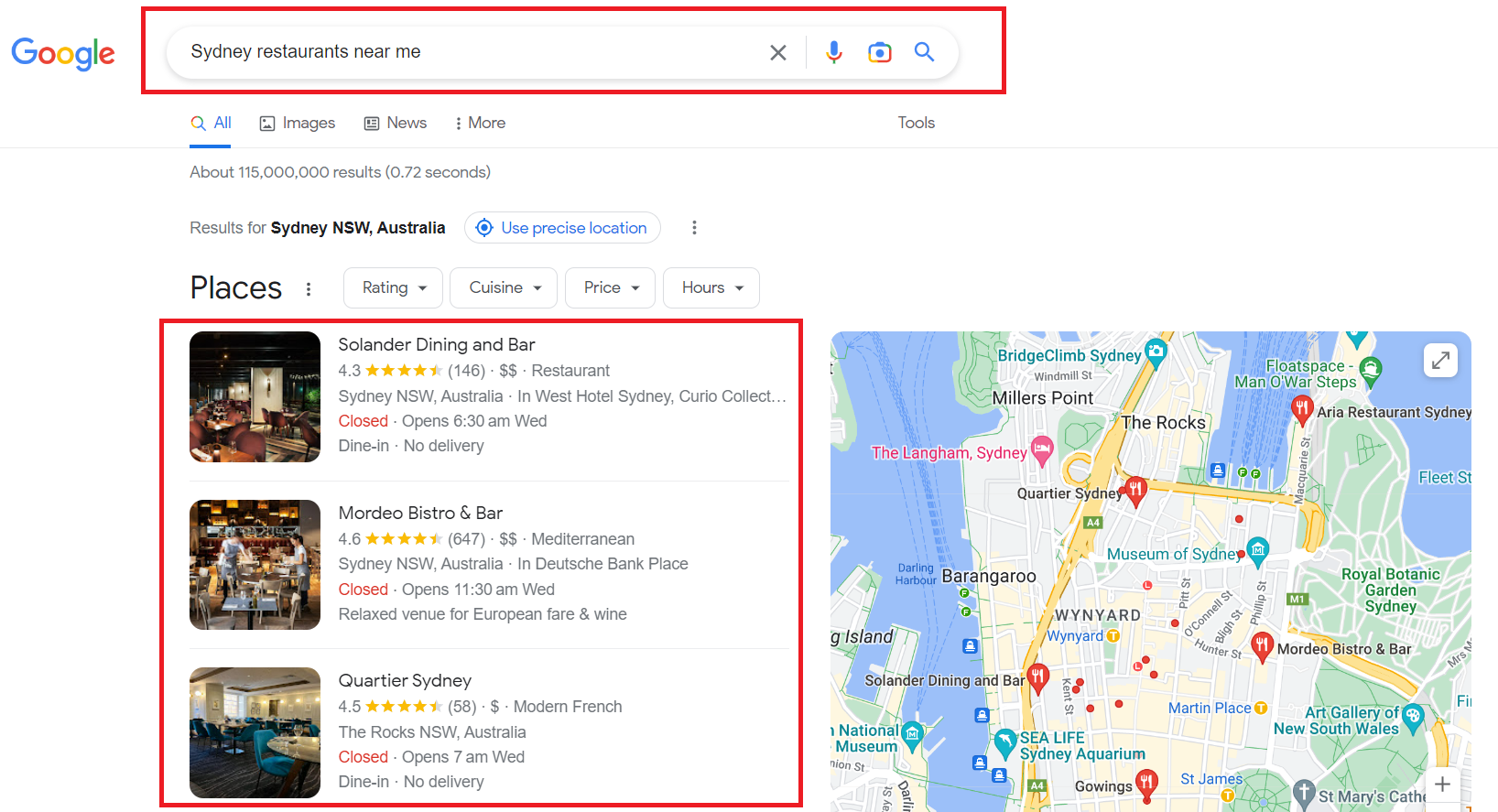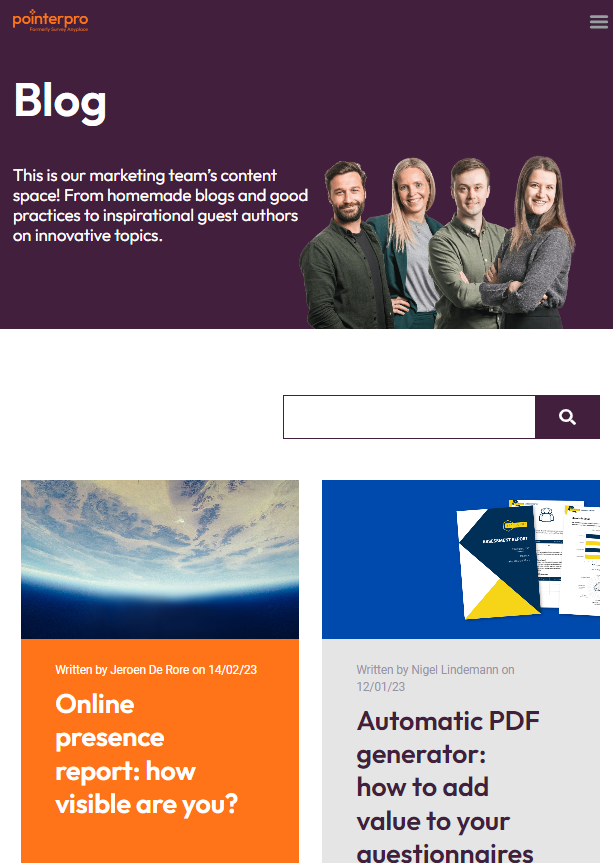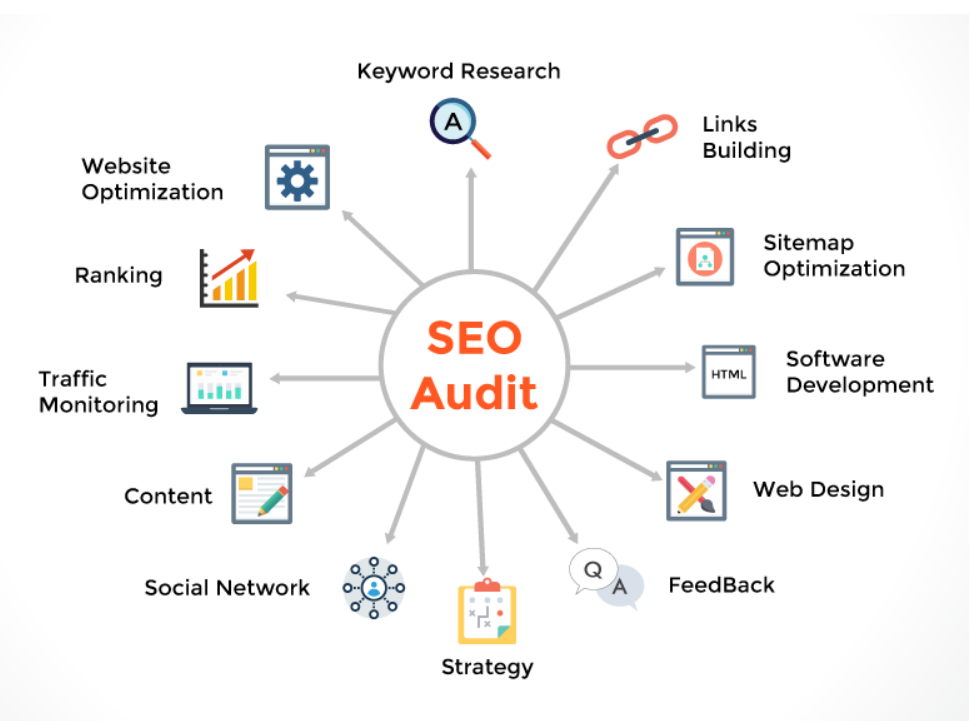About Author :
Burkhard Berger is the founder of Novum™. He helps innovative B2B companies implement revenue-driven SEO strategies to scale their organic traffic to 1,000,000+ visitors per month. Curious about what your true traffic potential is?
Getting your small business noticed on the front page of search engines is a real challenge. However, by implementing the right small business local SEO strategy, you can have killer online visibility and reach your potential customers in a breeze. Moreover, today local SEO is crucial to stay relevant and competitive in your industry while being able to attract customer attention and engagement.
Interestingly, the “near me” Google searches have escalated to more than
900% over the past two years. This shows how buyers are actively searching for products and services in their geographical location.
With this article, you’ll identify the 8 key practices to help you optimise your business website for Local SEO. By the end of the read, you can start implementing these strategies to attract local organic traffic to your site, generate more leads, and boost your business sales.
Let’s get started.
Local SEO refers to the SEO practices for increasing organic traffic and business visibility for a target location. While traditional SEO is related to optimising a website for global organic search queries, local SEO targets searches related to a particular geographical location.
From optimising your small business website for local keywords to making social media profiles, and adding citations from high-authority sites, there are many ways to implement local SEO. Let’s find out how it’s done with real-life examples.

Local SEO, if done the right way, can do wonders in promoting your small business to the target audience. However, having a defined local SEO strategy is the key to a successful online business that generates consistent ROI. These 9 ways will help you optimise your business website to attract local prospects.
Claim your local small business on Google My Business to attract more traffic to your site. Google My business gives many perks to small businesses as Google supports and shares its original content. It’s also a great way to reach your target audience, helps in creating customer reviews, and verify business location.
The best part, it’s free to use whether your business is large or small. However, it’s important to create and update your listings regularly for SEO optimisation. The downside is, users can make edits or changes to your online listings. Hence, check your listings for errors as well as outdated or incomplete information.
Here are a few steps to take for local small business SEO for Google My Business:
Currently, the content shared on social media is considered important for SEO as many search engine algorithms are designed to show social media profiles of businesses among websites in SERP. Having a social media presence helps build a positive brand reputation and gives your business a competitive edge.
To rank for local SEO, have social media signals pointing to your physical location. Today, millennials and gen Z rely on social media to check for the authenticity of a brand and get insights into brand reviews from actual online customers. To begin with, search for local businesses in your niche on social media channels and check for the information they’ve put there for the public and local SEO.
Make sure to add the following information to your social media profiles:
Always keep your information complete, current, and up-to-date to make it easier for potential customers to find and reach out. Also, make sure that your phone number is clickable. Moreover, optimise your social media photos and videos for local SEO by including meta tags, alt text, and using appropriate hashtags.
Among various social media marketing channels, Facebook, Instagram, and Twitter are the most popular to attract a local audience. For example, the option for localising posts on Facebook when a user checks in will make you more visible to potential customers among the user’s friend list and benefit small businesses.
The social media presence of small businesses can also serve as a virtual window for online users to get acquainted with products, services, upcoming sales, and events.
Making sure that your website is optimised for local keywords can help in generating leads and conversions. Interestingly, it’s easier to rank for location than for a business website name. Similarly, doing a thorough reach on keywords most relevant to your business and using them in your website content is the key to assisting search engine crawlers.
Here are a few ways to optimise your website for local SEO keywords:
For example, if a customer, residing in Sydney is looking for hiking shoes online, he might make a location-specific Google search like “hiking shoes in Sydney”. If your online or brick-and-mortar store is located in Sydney and optimised for local SEO, Google will show it in the first few search results of SERP.
You can add more related keywords to your website content for more chances of showing up in online search results. One way to find industry-specific keywords is by using online keyword-finding SEO tools. Or you can find related keywords for local SEO in the “related searches” or “people also search for” section of the Google SERP.
Putting your online business website to local business directory listings is a key factor for Search Engine Optimisation. A directory listing refers to a local store listing including the NAP (name, address, and phone number of the business). This information is crucial to rank businesses for local SEO. The good news, you can find a long list of online industry directories and many are free of cost.
Similarly, the local citations are the online mention of a business’ contact information, name, and address. This information must be accurate, consistent, and updated across all business directories and social networks. The citations must be the exact mirror of what is present on the Google My Business page in terms of the selling, formatting, and representation of data.
Otherwise, Google won’t show your business in SERP. Following are the key mistakes marketers make in the local SEO directories of their business:
Despite the importance of business directories, it gets difficult to manually supervise whether each online directory matches with Google My Business listings. Business owners use smart SEO tools like Moz Local, Yext, WhiteSpark, etc. to make quick audits.
Adding a blog to your small business website gives more potential for local SEO optimisation. It’s an easy way to attract online traffic to your website and reach the target audience quickly. People tend to rely on brands that provide some value to their life. The blog section on a business website also shows expertise in your industry.
If you provide authentic, useful, and insightful content to the target audience, they’d like to spend more time on your blog. The same people will act as leads and might end up making purchases through your website. For example, this
business assessment site leverages a blog section that features well-researched and credible reports to specifically attract business industry professionals.

Blog posts are a great medium to interact and form bonds with businesses related to your niche as well as potential customers. Not only you can find industry specialists but local vendors, business owners, and marketers working in your niche. Besides getting backlinks from websites in your niche, you’d get a chance to form a community in your niche and also adds to business credibility for boosting sales and revenue.
It’s always better to keep months of SEO content ready for your blog. You can post daily, bi-weekly, or weekly depending on your decided content strategy. Keep at least 3-5 blog posts ready to be published every week so your audience has something to look up to when they visit your site. You can always hire a
virtual assistant to keep your blog calendar organised.
Private Blog Network (PBN) is considered an SEO hack for search engine rankings as they utilise an array of websites for link building which ultimately boost website authority and ranking on SERP. If you plan to host multiple website blogs for SEO rankings, we recommend using a PBN hosting control panel to save time and money.
Search engines use schema markup language to read and interpret the content of website pages. Organised and categorised content makes it easier for search engine crawlers to identify and show your website on the SERP. To aid the search engines, each business website page should be categorised according to its offering.
For example, if you’re a business website that’s offering several products and services, have separate pages for each product/service. This way it's easier to SEO optimise each page for relevant keywords and increase the chances of website visibility and ranking.
Take a real-life example of this online popup builder that offers an array of website marketing products like popups, embedded forms, and automated email responders. They’ve used a separate page for each of their products for a better keyword ranking. Otherwise, it would be difficult for the schema to identify the product or business category.
Additionally, if you’re offering products and services in different locations, it’s best to rank each page for a specific location. This helps in local SEO and your chances of reaching potential customers will most likely increase.
For example, if you’re offering a house cleaning service in Glasgow and Manchester, you’d want to rank separately for the population of each city. It’s also easier to rank for long tail keywords like “house cleaning service in Glasgow” rather than “house cleaning service for Glasgow and Manchester”. We can tell the latter is never searched on Google by locals since a person cannot live in two cities at the same time.
Online reviews can be used as a tool to attract more traffic to your business site. Customers tend to rely on their friends, family, and user-generated content to make their purchasing decisions. If your local business has positive and excellent reviews on Google, chances are people will trust your brand more compared to a business with no reviews at all.
Always encourage your customers to leave a positive review on Google and multiple social media networks to improve your brand image, affinity, and customer loyalty. Positive customer reviews are liked to have a better local ranking and
conversions.
One way to do it is by giving customers incentives like a 10% off gift card or coupon to use on their next purchases if they give an honest review and rate their experience on Google business reviews. On the downside, actively monitor reviews as negative reviews can spoil a brand's reputation.
One of our favourite examples is this
custom software development website that incorporates a section of successful “client stories” to their website which serves the same purpose as reviews to boost the brands’ credibility.
One way to respond to negative reviews is by acknowledging your mistake and apologising to the customers in the review thread. This helps build business credibility as prospects are assured of your professionalism in addressing negative comments instead of just ghosting or deleting them.
However, if they’re not taking down their bad review off Google, try to offer refunds, gift cards, and coupons to exchange for reviews as compensation for bad customer experience.
Now you’ve set up your business on Google My Business and local directories as well as optimised it for local search ranking. The next step is to monitor the website performance and check if it’s mobile-friendly, and offers a top-notch user experience. This monitoring is termed an SEO audit. Review sites once a year to keep your business visible among online users.
It’s an integral part of a local SEO strategy as it
helps a business evaluate where they’re standing in the competitive market and what steps must be taken to reach high-ranking goals. An important aspect of website SEO is getting customer insights via leveraging tools and
embedded data pipelines. Google Analytics is one of the most popular tools to get to know your target audience and optimise your business to better suit their needs.
Here are the following things to consider during a local SEO audit:

Optimising your website for local SEO can do wonders in increasing your brand visibility, SERP ranking, and customer engagement. The best local SEO practices revolve around setting up your business on Google My Business, setting up local directories, and citations, and optimising website content to attract local organic traffic.
By applying the right set of techniques for your small business local SEO, you can reach location-specific customers, generate leads, and boost your sales and revenue. Now that you’ve learned our tried and tested 9 techniques for local SEO, it’s time to get into action and wear your local SEO expert hat to get started with SEO optimising your website and reap the benefits of organic traffic.
Want to get noticed by your potential customers? Look no further than DSIGNS where we take care of the digital marketing side of things and manage your website performance for attracting more sales for your business. Our creative website designs and converting marketing techniques can help you build your business empire of dreams with quality
Search Engine Optimisation techniques.
Contact us today to get started.

About Author :
Burkhard Berger is the founder of Novum™. He helps innovative B2B companies implement revenue-driven SEO strategies to scale their organic traffic to 1,000,000+ visitors per month. Curious about what your true traffic potential is?
Thank you. Someone from the office will be in touch with you.
All Rights Reserved | DSIGNS AUSTRALIA